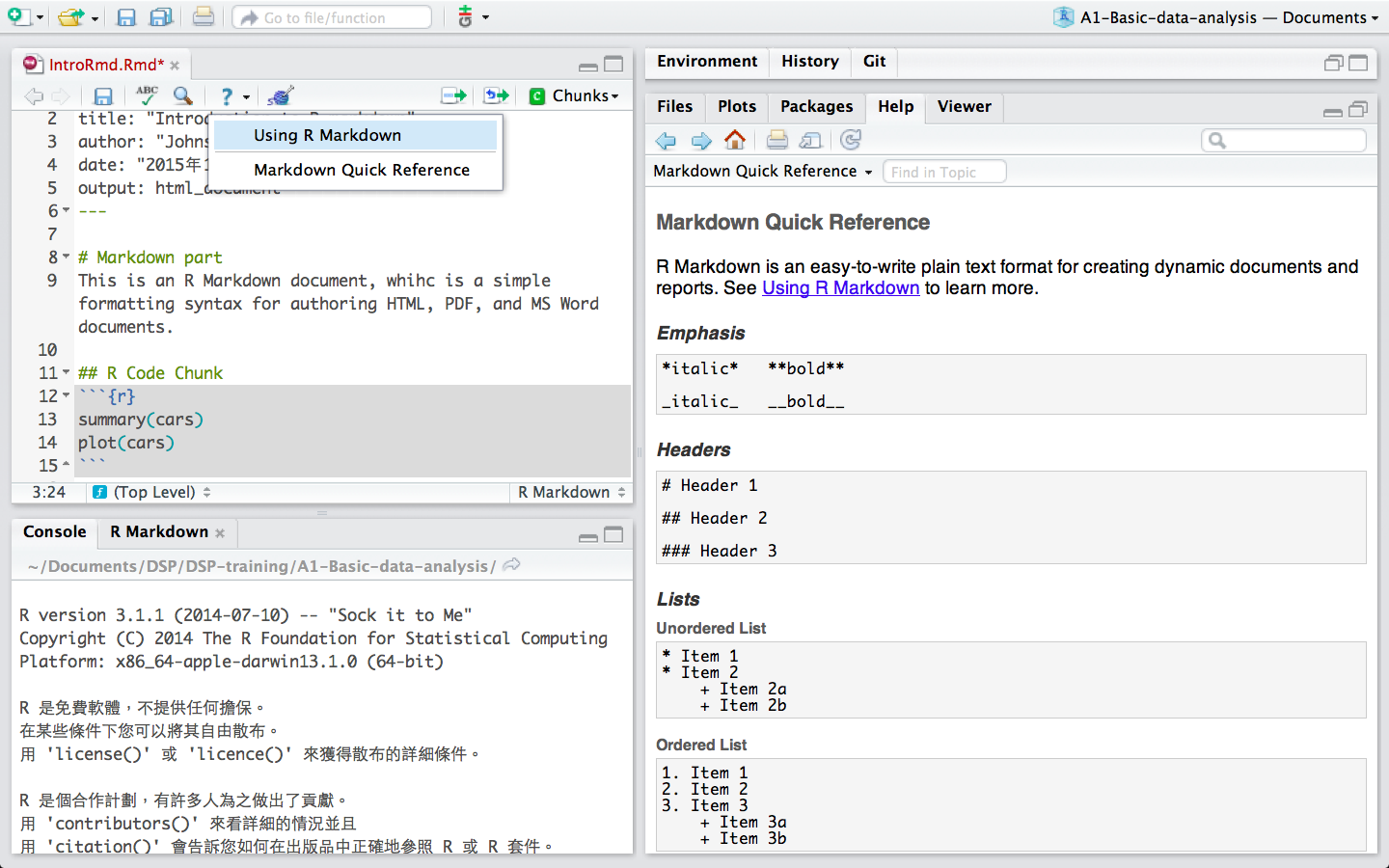

Each line of code can be directly linked to the original source so that adjustments to content can be made easily and transparently. and place all of these elements in one file.īy using code in Knitr, pdfs, Word documents, slide presentations, web pages and other document formats that are used in collaborative science, different pieces of information can be organized in one file. Knitr makes this process much easier by allowing the user to input text directly, access old text from outdated software, access data, graphs, html etc. It can be tedious, difficult and riddled with mistakes to attempt to locate and organize these elements one by one. Generally, the process of organizing these materials require accessing several different computing systems (software, graphs, animation etc.) and text. When research is reproduced, it is important that all notes, graphs, methods and all other details are clearly listed to be performed accurately. There are several other code chunk options that allow you to manipulate graphing data, add images, create animation, code in other languages and many more. To name a code chunk, the name must be placed in the initial line of the code chunk.Īn unnamed code chunk looks like this, ``` ``` Each code chunk must have a unique name (if it is named). It is of note that although code chunks do not need to be named, it may be useful to name them so that they are easy to locate if an error occurs.
RMARKDOWN HIDE OUTPUT PDF
exam solutions) PDF or Word output should be used instead of html.Knitr works directly with R Markdown by executing all the code chunks in the file. Therefore, when the hidden parts are supposed to be somehow confidential (e.g. On the other hand, PDF (LaTex) and Word outputs ignore html comments and the hidden parts aren't included in the knitted documents. Just a caveat: in html output the hidden parts are kept as comments and can be seen just by viewing the source. That might be useful in case there are several sections to hide or show at once - for example, solutions of course problems. ```Īnd just to show a complete working example, in the example below the middle section of the document can be shown or hidden by setting the hide variable to FALSE or TRUE.


There is a way to hide parts of the document (including text and chunks): to comment them out with html comment marks.Īnd comment marks can be generated by R in a block according to a variable that can be set at the beginning of the document. Was for having a father document and child documents which were conditionally compiled, but I don't want to slice my document into so many pieces. Insert portions of a markdown document inside another markdown document using knitr Where the solution was given for simple short text, which was included as an argument of the R print() function.
RMARKDOWN HIDE OUTPUT HOW TO
I know that I can use a logical variable in order to conditionally evaluate R code and show plots and R output, but I don't know how to show/hide blocks of (markdown and LaTeX) formatted text, unless I put all that text into R character vectors, which seems hard for keeping things clean and readable.Ĭonditionally display a block of text in R Markdown Besides, I would like use knitr in 2 versions: with and without the solutions, changing the source as less as possible, and compiling. Each solution may contain the results of the R console, but also some explaining (markdown and LaTeX formatted) text. I would like to edit a single rmarkdown (Rmd) document with a list of "problems", each followed by its solution.


 0 kommentar(er)
0 kommentar(er)
